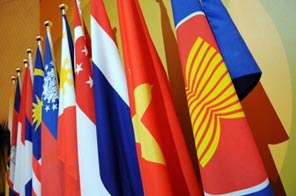ASEAN-China open free trade area
JAKARTA: China and Southeast Asia establish the world's biggest free trade area (FTA) on Friday, liberalising billions of dollars in goods and investments covering a market of 1.7 billion consumers.
Eight years in the making, the ASEAN-China FTA will rival the European Union and the North American Free Trade Area in terms of value and surpass those markets in terms of population.
Officials hope it will expand Asia's trade reach while boosting intra-regional trade that has already been expanding at 20 percent a year.
"In 2010 we are sending a strong signal that ASEAN is open," H.E Sundram Pushpanathan, of the Association of Southeast Asian Nations (ASEAN), told AFP.
China has just overtaken the United States to become ASEAN's third largest trading partner, and will leap Japan and the EU to become "number one" within the first few years of the FTA, said Pushpanathan, Deputy Secretary-General for the ASEAN Economic Community.
Under the agreement, China and the six founding ASEAN countries -- Brunei, Indonesia, Malaysia, Philippines, Singapore and Thailand -- are to eliminate barriers to investment and tariffs on 90 percent of products.
Later ASEAN members, including Vietnam and Cambodia, have until 2015 to follow suit.
Zhang Kening, the director-general of the department of international trade and economic affairs in Beijing, said the average tariff rate China charged on ASEAN goods would be cut to 0.1 percent from 9.8 percent.
Average tariffs imposed on Chinese goods by ASEAN states will fall to 0.6 percent from 12.8 percent.
ASEAN-China trade has exploded in the past decade, from 39.5 billion dollars in 2000 to 192.5 billion last year, Pushpanathan said.
At the same time, ASEAN-China trade with the rest of the world has reached 4.3 trillion dollars, or about 13.3 percent of global trade.
Teng Theng Dar, chief executive of the Singapore Business Federation, said sectors likely to reap the most benefits from the FTA included services, construction and infrastructure, and manufacturing.
"Other than product and service innovations, this is one great new business opportunity for the establishment of a regionally-based innovative supply chain for market reach and growth," he said.
Officials said there was more to the deal than sating China's thirst for Asian raw materials like palm oil, timber and rubber, and opening up regional markets for its manufactured products, steel and textiles.
"China and ASEAN countries are all export-oriented economies. A large proportion of our products target the US and EU markets... Generally neither side took the other's market as its most important target market," Zhang said.
"But with the establishment of the China-ASEAN free trade zone, we think there is potential to improve or adjust this situation... Both sides have many goods that complement each other's needs."
Not everyone is happily singing the free-trade anthem, however.
At the 11th hour, industry groups in Indonesia, Southeast Asia's biggest economy, and the Philippines are frantically pressing their governments to keep tariffs on vulnerable sectors until 2012.
"These sectors aren't ready to compete with imported Chinese products. If the government implements free trade now, these industries are surely going to die," Indonesian lawmaker Airlangga Hartarto said.
He cited 12 sectors including textiles, petrochemicals, footwear, electronics, steel, auto parts, food and drinks, engineering services and furniture.
"For example, a local sack for sugar, rice and fertilizer costs about 1,600 rupiah (1.70 dollars) each. A Chinese sack costs about 800 rupiah each," he said.
Indonesian Footwear Association chairman Eddy Widjanarko said Chinese firms would take their share of the Indonesian market to 60 percent from 40 percent, costing some 40,000 local jobs.
Indonesian Furniture Producers Association executive director Tanangga Karim blamed the government for failing to level the playing field, and called for non-tariff protection in the form of strict safety and quality controls.
"We have to admit that we aren't ready to compete now with imported Chinese products," he said.
Pushpanathan conceded that some local businesses would struggle.
"In the short term there will be some adjustments that some countries have to make. Some local companies will lose their domestic market share but ultimately consumers will benefit," he said.






